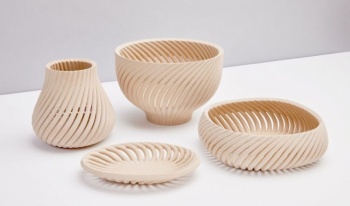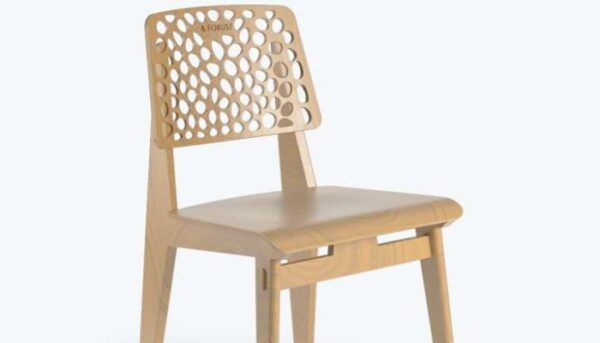
US-based Forust 3D was founded with a mission to make high-volume wood 3D printing affordable, reliable and sustainable. To do this, it leverages the speed, precision and quality of the binder jetting process to produce strong, lightweight wood components. Two wood waste materials, sawdust and lignin, are used as the printing material for this purpose. Forust 3D aims to contribute to responsible material value chains that will eventually make it possible to achieve net zero carbon emissions.
This is particularly significant because, according to the company, 15 billion trees are felled every year to make paper, build houses and manufacture furniture. Which equates to 84 million tons of wood waste sawdust per year. Some of this waste is recycled and sold to downstream markets to make particleboard or wood pellets for energy, but the opportunities for recycling these waste products are many and offer unimagined possibilities.

Photo Credits: Forust 3D
Additive Manaufacturing and Forust 3D
Forust 3D uses high-speed 3D printing to give these discarded resources a new life. The company produces strong, beautiful and environmentally friendly wood products from wood waste. The manufacturing process used was developed by Desktop Metal, who acquired Forust in 2021, and is based on using industrial sawdust waste as a 3D printing material for mass production in furniture, architecture, consumer goods and even luxury car interiors.
The company uses small and large format binder jetting printers to manufacture its products. This allows products to be manufactured in a variety of scales as the smaller printers are used for batch production and larger ones for mass production. The printing process begins with the application of sawdust to the build plate, then the machine’s inkjet nozzles travel over the material to distribute lignin as a binder and ink for visual effect. This is also one of the special features of Forust 3D’s printing process. In terms of the materials used, no additional adhesive needs to be used because the lignin from wood waste is used as a binder, which creates yet another environmental benefit.

Photo Credits: Forust 3D
Forust 3D’s binder jetting process not only offers the ability to print grainless, smooth wood surfaces but also to implement a never-before-seen technology that simulates real wood grain through a wood product. This effect can make the final product almost indistinguishable from natural wood. This can be especially interesting for designers, as it allows them to create complex organic shapes that would be more difficult or virtually impossible to implement with ordinary wood manufacturing.
*Cover Photo Credits: Forust 3D



